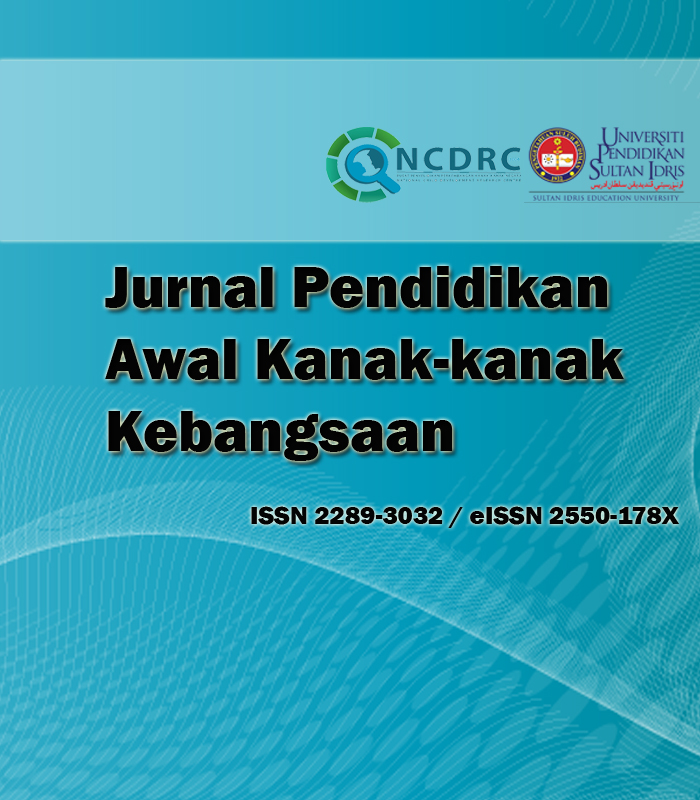Early childhood teachers’ perspectives on the effectiveness of teaching vocabulary through nursery rhymes
DOI:
https://doi.org/10.37134/jpak.vol9.sp.2.2020Keywords:
young learners, perception, early childhood teacher, music, vocabularyAbstract
The aim of this study was to measure the perspectives of early childhood teachers on the effectiveness of teaching vocabulary through music. The samples of the study were 30 early childhood teachers in Sarawak. Quantitative approach was used and the design of the study was an online survey. An instrument was developed which focuses on the investigating early childhood teachers’ perspectives on the effectiveness of teaching vocabulary through music. The findings highlighted that the teachers emphasised the teaching of vocabulary in English language learning should be fun and engaging for the young English language learners. The implication of the study suggests that teachers must be professionally-trained to use nursery rhymes and songs in teaching vocabulary in early childhood classroom.
Downloads
References
Chan, C. J., & Kwan, S. S. (2010). Implementation of music in government preschools in Malaysia: Music activities, teachers’ perceptions and teachers’ self-efficacy. Pertanika Journal of Social Science and Humanities, 18(2), 209-225.
Coyle, Y., & Gracia, G. (2014). Using songs to enhance L2 vocabulary acquisition in preschool children, ELT Journal, 68 (3), 276–285. https://doi.org/10.1093/elt/ccu015
Danielson, E. (2000). The importance of nursery rhymes. https://www.semanticscholar.org/paper/The-Importance-of-Nursery-Rhymes.-Danielson/79ab1b278c7fb06d0553acb44b56541302534a63
Kumar, R. (2019). Research methodology: A step-by-step guide for beginners. SAGE.
Kuśnierek, A. (2016). The role of music and songs in teaching English vocabulary to students. World Scientific News, 43(1), 1-55.
Machado, J. M. (2013). Early childhood experiences in language arts: Early literacy (10th ed.). Wadsworth Cengage Learning.
Mamat, N., & Asong, R. (2014). Penggunaan cd multimedia interaktif dalam meningkatkan kefahaman bahasa Inggeris dan mengubah tingkah laku pembelajaran kanak-kanak prasekolah. Jurnal Pendidikan Awal Kanak-Kanak Kebangsaan, 3, 79-99.
Neaum, S. (2012). Language and literacy: For the early years. SAGE Publications Ltd.
Rohmah, N. L. (2020). The effectiveness of using nursery rhymes to improve students’ vocabulary on English young learners (EYL) at the third grade at University of Muhammadiyah Malang. Unpublished thesis, Universitas Muhammadiyah Malang.
Shwetha, R. (2013). Nursery rhymes as an effective instructional material for young language learners. Language in India, 13(6), 772-780.
Suriyani Kesuma, S. (2017). Improving English vocabulary through nursery rhymes: A case study of a four-year old child. Unpublished Thesis. Universitas Sumatera Utara.
Zaidon, S., & Ayob, A. (2013). Kemahiran bahasa, penjanaan idea dan penulisan kanak-kanak prasekolah. Jurnal Pendidikan Awal Kanak-Kanak Kebangsaan, 2, 58 - 82.
Downloads
Published
Issue
Section
License
Copyright (c) 2020 UPSI Press

This work is licensed under a Creative Commons Attribution-NonCommercial-ShareAlike 4.0 International License.





